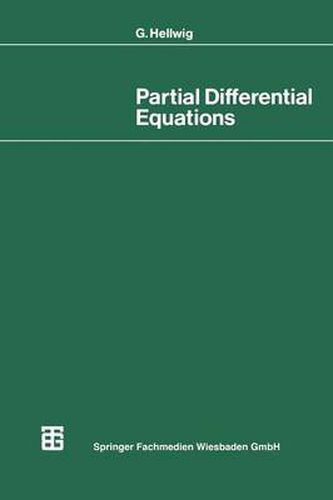Readings Newsletter
Become a Readings Member to make your shopping experience even easier.
Sign in or sign up for free!
You’re not far away from qualifying for FREE standard shipping within Australia
You’ve qualified for FREE standard shipping within Australia
The cart is loading…






This title is printed to order. This book may have been self-published. If so, we cannot guarantee the quality of the content. In the main most books will have gone through the editing process however some may not. We therefore suggest that you be aware of this before ordering this book. If in doubt check either the author or publisher’s details as we are unable to accept any returns unless they are faulty. Please contact us if you have any questions.
This book is intended to give an introduction to the field of partial differential equations. The presentation is intentionally not too brief so that graduate students should be able to read it without serious difficulty. In addition to requiring a thorough knowledge of differential and integral calculus as well as of the theory of ordinary differential equations, it presupposes a few results from complex variables, and, in its last part, a few from func- tional analysis and real variables. The goals of the book necessitated a careful selection of material. Of course, in the framework of this guidebook, problems that today stand in the foreground of scientific development could only be taken into consideration peripherally. However, the author hopes that his efforts to present some of these can be felt. In Part I, simple examples are treated, namely, the wave, potential, and heat equations. There the Gauss integral theorem in R appears as an important tool. Part II deals with the normal forms and characteristic manifolds for partial differential equations of the second order and for systems of partial differential equations of the first order in more than one unknown function. Here normal forms are given that can be obtained by very ele- mentary means. In Part III questions of uniqueness for various initial-value and bound- ary-value problems are discussed, by means of the maximum-minimum principle and the energy-integral method, respectively.
$9.00 standard shipping within Australia
FREE standard shipping within Australia for orders over $100.00
Express & International shipping calculated at checkout
This title is printed to order. This book may have been self-published. If so, we cannot guarantee the quality of the content. In the main most books will have gone through the editing process however some may not. We therefore suggest that you be aware of this before ordering this book. If in doubt check either the author or publisher’s details as we are unable to accept any returns unless they are faulty. Please contact us if you have any questions.
This book is intended to give an introduction to the field of partial differential equations. The presentation is intentionally not too brief so that graduate students should be able to read it without serious difficulty. In addition to requiring a thorough knowledge of differential and integral calculus as well as of the theory of ordinary differential equations, it presupposes a few results from complex variables, and, in its last part, a few from func- tional analysis and real variables. The goals of the book necessitated a careful selection of material. Of course, in the framework of this guidebook, problems that today stand in the foreground of scientific development could only be taken into consideration peripherally. However, the author hopes that his efforts to present some of these can be felt. In Part I, simple examples are treated, namely, the wave, potential, and heat equations. There the Gauss integral theorem in R appears as an important tool. Part II deals with the normal forms and characteristic manifolds for partial differential equations of the second order and for systems of partial differential equations of the first order in more than one unknown function. Here normal forms are given that can be obtained by very ele- mentary means. In Part III questions of uniqueness for various initial-value and bound- ary-value problems are discussed, by means of the maximum-minimum principle and the energy-integral method, respectively.